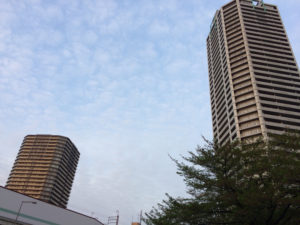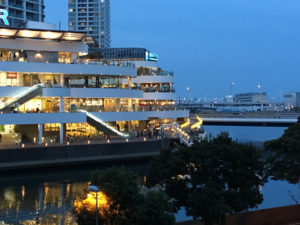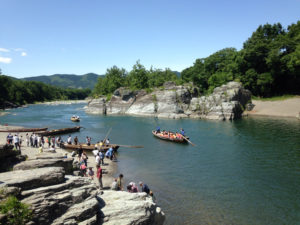(Picture: Yokohama)
Recruit Sumai Co., operator of the Suumo residential information website, recently released the ranking of locations
(and train stations) where people in the Kanto region want to reside in 2018.
(Kanto region in this report covers Tokyo, Kanagawa, Chiba, Saitama and Ibaraki)
They released the same report for Kansai region (including Osaka, Kyoto and Kobe as well.
The survey began in 2010 and has been conducted every year.
7000 people in the Kanto area responded and they are in the
age between 20 and 49. People over 50 years old are not surveyed, which naturally distorts the statistics.
Here is the ranking for 2018 and data in 2017 and 2013 are also illustrated for a comparison purpose.
|
Ranking 2018 |
Ranking 2017 |
Ranking 2013 |
|
1 Yokohama |
3 |
3 |
|
2 Ebisu |
2 |
2 |
|
3 Kichijoji |
1 |
1 |
|
4 Shinagawa |
5 |
8 |
|
5 Ikebukuro |
7 |
13 |
|
6 Musashikosugi |
6 |
12 |
|
7 Shinjuku |
12 |
7 |
|
8 Meguro |
4 |
4 |
|
9 Omiya |
15 |
15 |
|
10 Urawa |
19 |
NA |
(Picture: Nagatoro in Saitama)
I have to remind you that Recruit changed the survey method from 2018 thus comparison between 2018 and 2017 area slightly skewed.
It is fundamentally the popularity voting, in other words wishful thinking list.
Top three areas, Yokohama, Ebisu and Kichijoji, are always pulling in the media attention.
In my opinion, in particular, both Yokohama and Kichijoji are a way overrated.
Yokohama (in Kanagawa pref.) is ranked only 14th among people who live in Tokyo and 7th among people who live in Saitama.
In addition, Yokohama is ranked 6th among people who in Ibaraki prefecture which is so far away from Yokohama.
So we, as investors, cannot take the result too seriously, however, there are some interesting developments over 5 years which caught my eyes.
1. Yokohama tops the list.
In Kanto region, Yokohama has been a very popular place to live for a long time but why is it at No.1 spot now ?
2. Good vintage (prestigious) locations such as Kamakura, Jiyugaoka dropped from the top 10 lists.
Kamakura and Jiyugaoka were 5th and 6th respectively in 2013 ranking.
In 2018, Jiyugaoka was in the 13th spot followed by Kamakura.
Other historically popular locations such Shimokitazawa (37) and Daikanyama (68) dropped the ranking significantly.
What is the implication of these results ?
3. Two stations from Saitama prefecture stand out and cracks in the top 10 list.
These are Omiya (9) and Urawa (10)
What does it mean ?
4. Popularity of the local municipalities
Recruit also surveyed the popularity of the local municipalities.
On top of the locations (station) they want to live, Recruit also asked which municipalities they want to live.
It is rather confusing but people associate the image the area either with
the name of stations nearby or the name of the local government.
Surprisingly, the results send us the very confusing signals.
The ranking of municipalities are completely different from that
of the stations.
Actual ranking was as follows :
The are all within Tokyo 23 wards.
What does it mean ?
|
1. Minato |
|||
|
2. Setagaya |
|||
|
3. Chiyoda |
|||
|
4. Meguro |
|||
|
5. Bunkyo |
|||
|
6. Shibuya |
|||
|
7. Shinjuku |
|||
|
8. Shinagawa |
|||
|
9.Chuo |
|||
|
10. Suginami |
|||
5. Recruit also released the ranking for ‘best secret spots’ meaning places offer “value for the money”.
(i.e. rent is relatively cheaper despite the location and convenience)
The best secret places are the areas investors should keep their eyes on.
If you can find a good property to invest in these areas, it could
offer the good appreciation in the future.
Vintage central areas such as Roppongi, Shibuya, Ebisu and Shinagwa etc have been already appreciated over the last few years and it is becoming much tougher for us to find a good diamond investment.
Rankings of best secret spots :-
|
1. Kitasenju (Hibiya line) |
|
|
2. Akabane (JR Keihintohoku line) |
|
|
3. Wakoshi (Tobu Tojo line) |
|
|
4. Omiya (JR Keihintohoku line) |
|
|
5. Kashiwa (JR Joban line) |
|
|
6. Moriya (Tsukuba express line) |
|
|
7. Kawaguchi (JR Keihintohoku line) |
|
|
8. Kamata (JR Keihintohoku line) |
|
|
9. Ikebukuro (JR Yamanote line) |
|
|
10.Tabata (JR Yamanote line) |
|
JR Keihintohoku line is apparently very popular as it has been revamped over several years
and connectivity is even better now.
The Keihintohoku Line is a Japan Rail train line running north-south through greater Tokyo, from Omiya (in Saitama prefecture) through Tokyo, down to Yokohama (in Kanagawa prefecture).
The Negishi Line connects to the Keihintohoku line at Yokohama, and goes down to Ofuna. The Keihintohoku-Negishi Line is the name given to the whole stretch of line from Omiya in the north to Ofuna in the south.
(Overall observations and insights)
Recruit explains “Core areas in suburban regions that are home to more commercial facilities began growing in popularity around 2016, although central parts of Tokyo were especially popular previously”
Answers from each respondents also say Yokohama’s excellent traffic accessibility, hordes of commercial facilities are the reasons they like Yokohama.
(Observation and Insights)
Here are my observations and insights.
1. Popularity voting
Again the survey is the popularity voting and do not really match the realistic decisions when people
find a place to live.
When it comes to the more realistic decision to rent or buy, please watch the pricing and budget first.
Yokohama and Kichijoji are both overrated due to the fact they are often
featured by TV and magazines as the sightseeing spots.
2. Life style is changing and people want to live closer to central Tokyo
Some of the vintage areas (stations) such as Shimokitazawa(Odakyu line), Jiyugaoka(Tokyu line), Tama-plaza (Tokyu line) and Futagotamagawa (Tokyu line)are clearly losing their popularity whereas Urawa (JR line) and Omiya (JR line) are gaining the favour.
Places like Tama-plaza and Futagotamagawa have been featured in the TV commercials and dramas 20-30 years ago and they are still keeping the good values, however, these locations are becoming outdated and the market
begins to realize they have been overvalued.
I think this is partly due to the age skews of respondents (the survey only covers 20-49 years old)
but the change of people’s life style plays a more central role.
People in 20s and 30s are now very busy and don’t want to spend
much time on commuting and moving around for shopping and child care.
In this respect, Yokohama, Ebisu, Shinagawa, Ikebukuro, Shinjuku, Urawa and Omiya all offer the very good accessibility and connectivity of the trains. And they are all along JR terminal railroad stations where passengers can change the lines.
Large terminal railroad stations often become the entrance to a wide range of sightseeing spots and as well as the shopping spots.
3. Omiya and Urawa are gaining popularity.
This is the interesting development.
I have to admit I have never lived in Saitama so Saitama is not my cup of tea.
But I do know developments there.
There are two reasons.The most significant reason is the new railroad called ‘Ueno-Tokyo line by JR east was built. The new railroad started the operation in 2015. Trains from the Utsunomiya Line, Joban Line, and Takasaki Line run non-stop between Ueno and Tokyo Station and continue on the Tokaido Line towards Shinagawa and Yokohama stationsThe line dramatically improve the connectivity for people who work in central Tokyo.
Second is that new high-rise condominiums buildings have been built in Urawa and Omiya over the last few years.
4. The ranking of local municipalities is not matching that of the stations at all.
Municipals ranking reflects reality more about the people’s wish where they want to live.
Yokohama and Kichijoji are more like tourists place in people’s mind.
As I said earlier, the image (often barding status) of local municipalities are very important
for Japanese people. The barding status translates your property into the appreciation.
5. Best secret spots to live: The most important
In my opinion, this ranking is the most important.
If you can find a good property to invest in these areas, it could offer the good appreciation in the future.
Vintage central areas such as Roppongi, Shibuya, Ebisu and Shinagwa etc have been appreciated significantly over the last few years and it is becoming much tougher for us to find a good jewel investment. Investors should keep eyes on these spots to see how the property price there will appreciate or not.
Is it the good time to buy a property in Tokyo ?

(Picture: High rise condos in Saitama)
Toshihiko Yamamoto
Real estate investing consultant and author.
Toshihiko is currently writing a book about the real estate investing in Japan
for foreign investors. About the book
Founder of Yamamoto Property Advisory in Tokyo.
International property Investment consultant and licensed
real estate broker (Japan).
He serves the foreign companies and individuals to buy and sell
the real estates in Japan as well as own homes.
He holds a Bachelor’s degree in Economics from
Osaka Prefecture University in Japan
and MBA from Bond University in Australia


